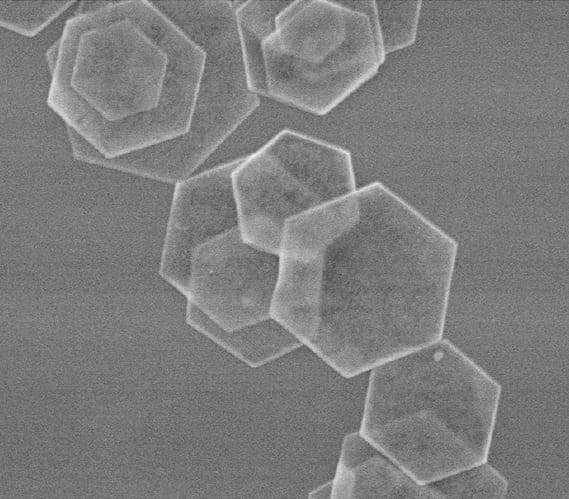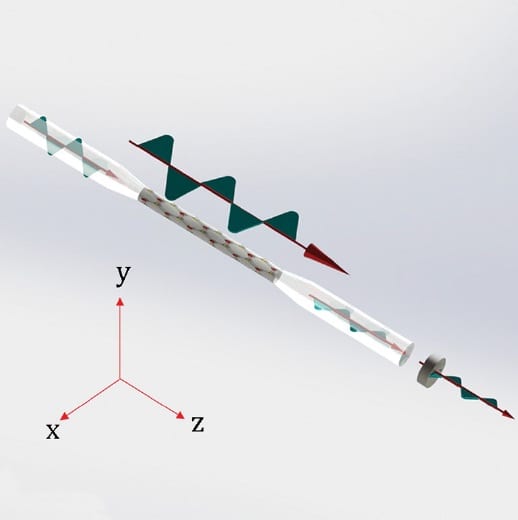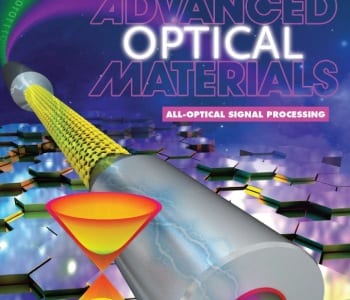
Bi2Te3 nano-platelets
Topological insulators are a new class of Dirac material with a small bandgap in the bulk state and a gapless metallic state on the surface.
Recently, topological insulators have been heavily studied because of their fantastic electronic properties and nonlinear optical characteristics. Previous experimental investigations have found topological insulators to show giant nonlinear refractive indices and a broadband saturable absorption ranging from the visible to the mid-infrared, even extending towards the microwave band. These fantastic nonlinear optical characteristics are likely to create novel technologies and new applications for pulsed laser generation, light sources for communications, photodetectors, etc.
However, what caught the attention of researchers working in China was whether topological insulators might be developed as all-optical-processing devices, with a wide applicability towards ultrahigh bit-rate communications systems. The lack of suitable nonlinear optical host materials turned out to be the most enticing chlallenge curently limiting the further development of all-optical signal processing. In their recent publication, Ying Li, Han Zhang (Shenzhen University) and co-workers demonstrate a novel all-optical processing device by combining topological insulators and microfibers.  Light–matter interactions are achieved through the interaction of topological insulators with the evanescent field of propagating light.
Light–matter interactions are achieved through the interaction of topological insulators with the evanescent field of propagating light.
This topological insulators-based prototype device is then used to realize optical Kerr switching, and four wave mixing-based wavelength conversion in the telecommunications band. Enlightened by this contribution, the optical community can now explore the potential applications of topological insulators for all-optical processing, paving the way towards ultrahigh bit-rate optical communications.














